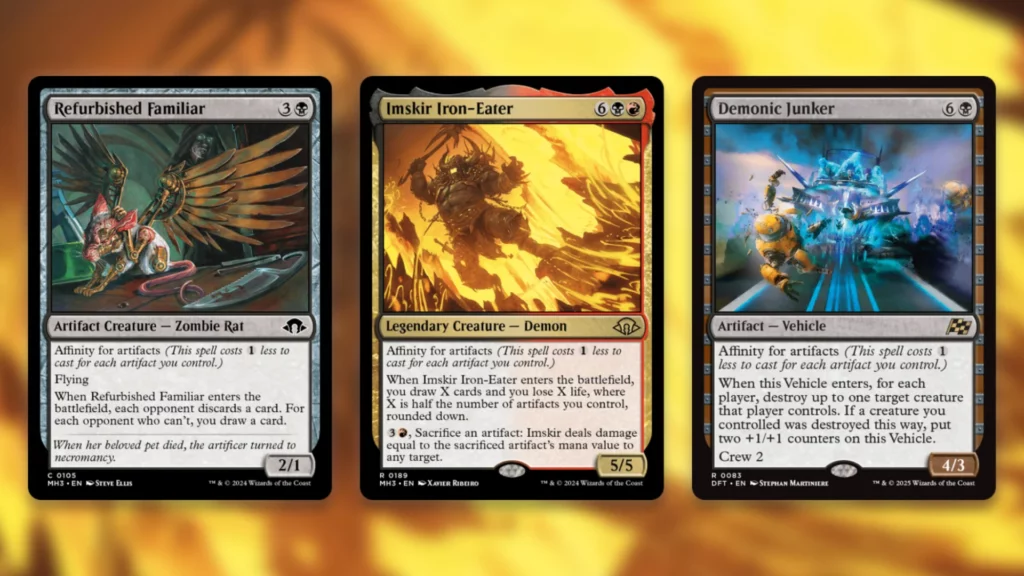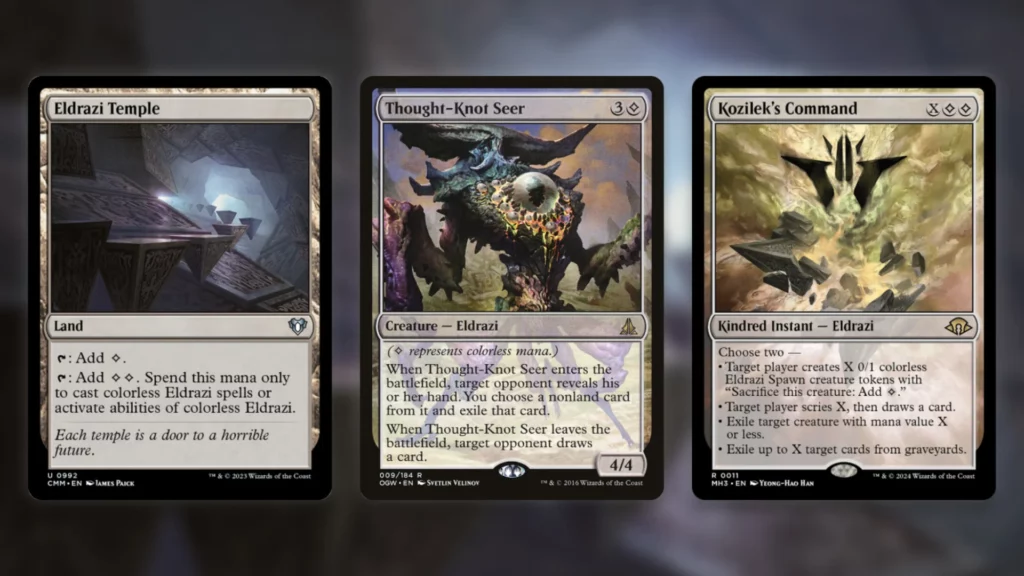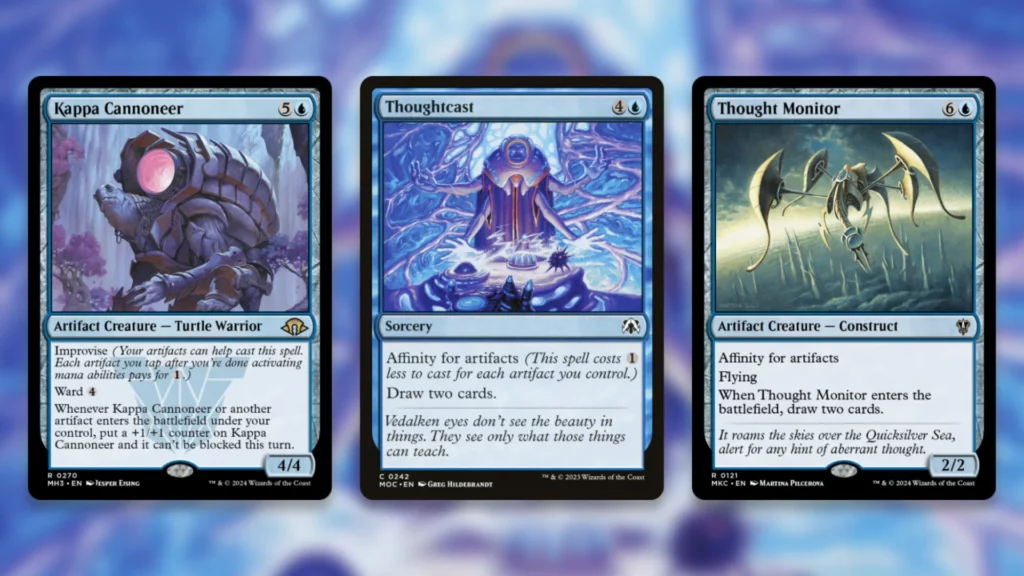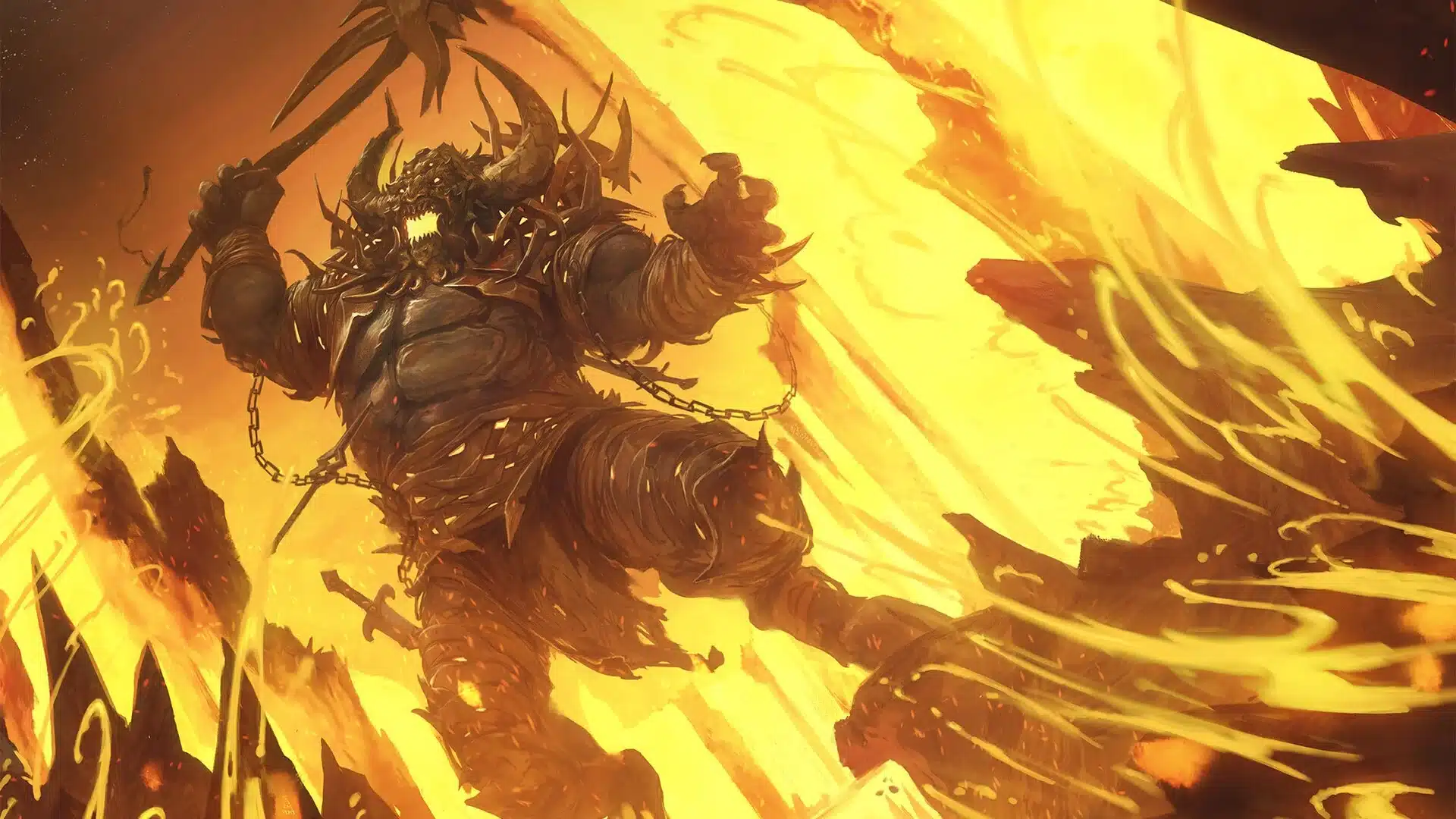For as long as Affinity has been a viable archetype in Magic: The Gathering, blue has been a core part of it. The color simply opens up a ton of powerful options for the deck, mainly in the card draw department. The idea of running Affinity without blue has, for the most part, never been seriously entertained as a result. This week, a brave soul sought to challenge this long-standing status quo. In Monday’s Modern League, a bold MTG player went undefeated with a Rakdos Affinity list.
Without access to the typical Affinity staples, this deck looks a fair bit different from its blue-hued cousins. It also makes some surprising decisions elsewhere, like the inclusion of an impromptu Eldrazi package. It’s certainly not the kind of deck you’d expect to succeed in Modern, but early results are very positive. This could be the rare bold experiment that goes on to seriously impact the metagame.
Rakdos Affinity In MTG Modern

The Rakdos Affinity list in question comes to us via MTG player DiamondAtog, who piloted it to a 5-0 finish in the MTGO Modern League on Monday. Also called “Dark Affinity” by some on Twitter, this is a deck with more than a few surprises up its chrome-plated sleeve.
As an Affinity deck, the core playstyle here remains intact from the traditional blue version. You load up your board with cheap artifacts, then cast powerful Affinity payoffs for cheap and ride that tempo to victory. In this case, those payoffs are Imskir Iron-Eater, Refurbished Familiar, and Demonic Junker.
Imskir is perhaps the most crucial among these. It fills the gap left by Thoughtcast et al, providing the deck with the cheap draw necessary to compete. It also packs a very handy 5/5 body, which is nothing to sniff at, even in Modern. The draw here scales with your artifacts in play, so when this comes down for two it’s drawing you three. That’s incredibly powerful, and the artifact-based Fling effect is a nice cherry on top.
Familiar and Junker are more reactive, offering hand attack and removal, respectively. Both can consistently be cast for just one black mana, and both advance your tempo game plan nicely. Junker plays particularly well with Imskir. With its base cost of seven it lets you deal seven to your opponent’s face for four mana, which is a nice finisher indeed.
Enabling these power plays we have a range of cheap artifacts. Mox Opal is a given, and Blood Fountain is two artifacts for just one mana, which is a brilliant reward for running black. Throw in a package of one-cost artifacts and Urza’s Saga, and you have yourself an enabler suite.
Surprise Spaghetti Monsters

With those core cards alone, DiamondAtog’s Rakdos Affinity would be a remarkable MTG deck. What pushes it even further over the edge is its seemingly random Eldrazi package. The deck runs full playsets of Thought-Knot Seer, Kozilek’s Command, and, most mystifying of all, Eldrazi Temple.
On the surface, this looks like lunacy. Eldrazi Temple is a pretty awful land when it isn’t tapping for two, and including two other cards just to accommodate it hardly seems like sensible deckbuilding. Look a bit deeper, however, and it makes a surprising amount of sense.
The deck already has a bit of a hand attack theme going on, with Refurbished Familiar, Thoughtseize, and Inquisition of Kozilek showing up in solid numbers. This is another advantage of running black, and lets you interact with troublesome opponents early on. Thought-Knot Seer is a natural extension of this, hitting your opponent’s hand while also putting a body on the board. Running Temple to sometimes power it out early seems like a solid trade-off to me.
This is especially true when you factor in Kozilek’s Command. As a Kindred Eldrazi instant, Temple can put two mana towards this as well. Once it does, the versatility here is unmatched. Command can exile creatures, wipe out graveyards, draw you cards, and even ramp you mana. The card is like four sideboard slots in one, so seeing it in the main deck makes total sense here.
That just about covers this unusual Magic: The Gathering deck. You aim for tempo plays early with either Temple or Affinity and react to your opponents via hand attack and Urza’s Saga silver bullets. The main deck runs Shadowspear, Pithing Needle, Nihil Spellbomb, and The Rack in this regard. These cards solve problems in a pinch, and they also count towards your Affinity total.
Better Than The Original?

So this MTG Rakdos Affinity list has plenty of power behind it, that much is clear. The question of the hour is whether it’s better than the classic blue-aligned Affinity lists of the past. While instinct suggests that an offbeat brew like this would be worse in nearly every way, that’s actually far from the truth.
Blue Affinity does have plenty of advantages, that much is true. Getting to run both Thoughtcast and Thought Monitor gives the deck significantly more draw power, which is a big deal in an archetype that burns through resources quickly. Aetherdrift also brings Voyage Home to the table, which exacerbates this divide further. On top of that, it’s better at putting out threats. Kappa Cannoneer is a terrifying creature to face, being basically unblockable and untargetable.
On the other hand, Rakdos Affinity is much better at playing a reactive game. Demonic Junker is solid removal, and the hand attack suite lets you deal with most problems well in advance. Being in black also gives you access to Blood Fountain for extremely early Affinity plays.
Overall, it’s a tough one to call. Whichever Affinity path you choose, you’re sacrificing something. Perhaps the ideal list is some kind of Grixis brew that can play all the hits at once, relying on Modern’s excellent mana and Mox Opal to smooth out the color requirements. Or maybe committing fully to one path is more consistent, and therefore more powerful, in the long run.
For now, it’s impossible to say. DiamondAtog’s list, while a novelty for now, could easily claim a real niche in the meta soon. If you’re a Magic: The Gathering player with a penchant for artifacts, watch this space carefully.
